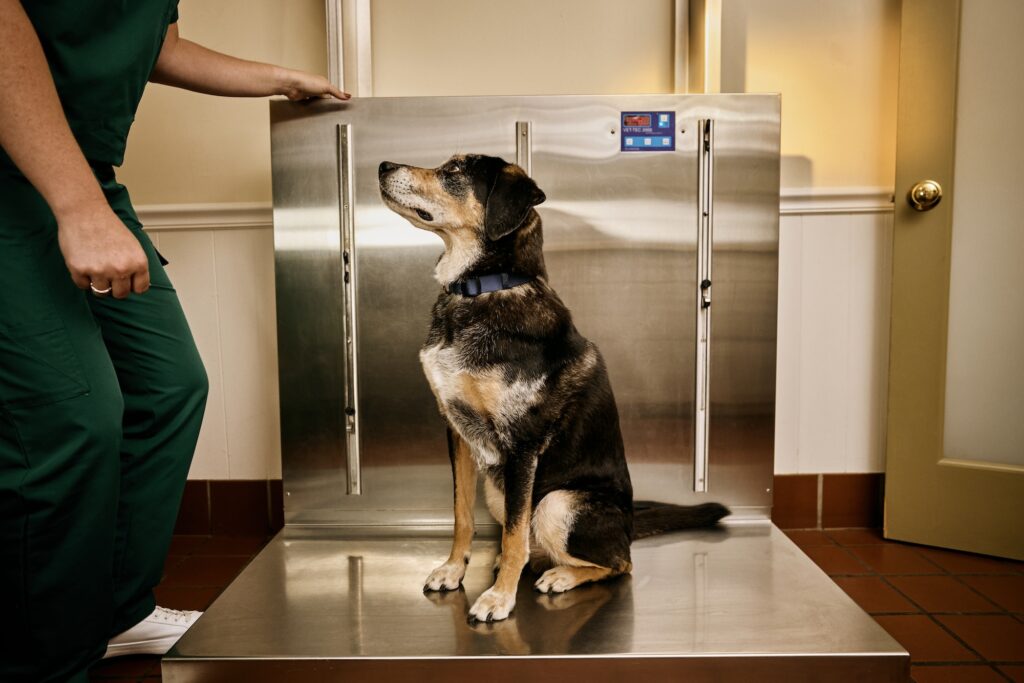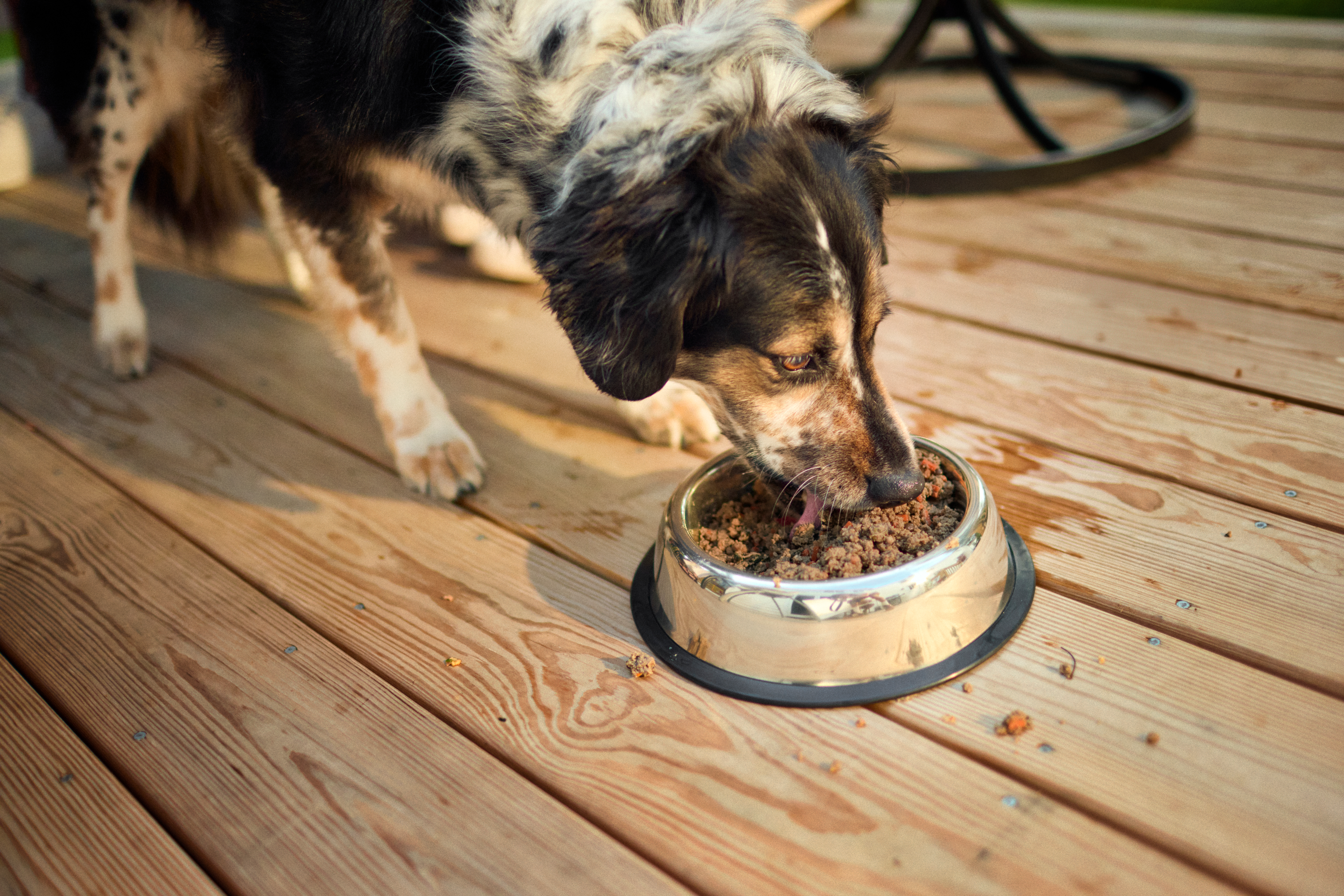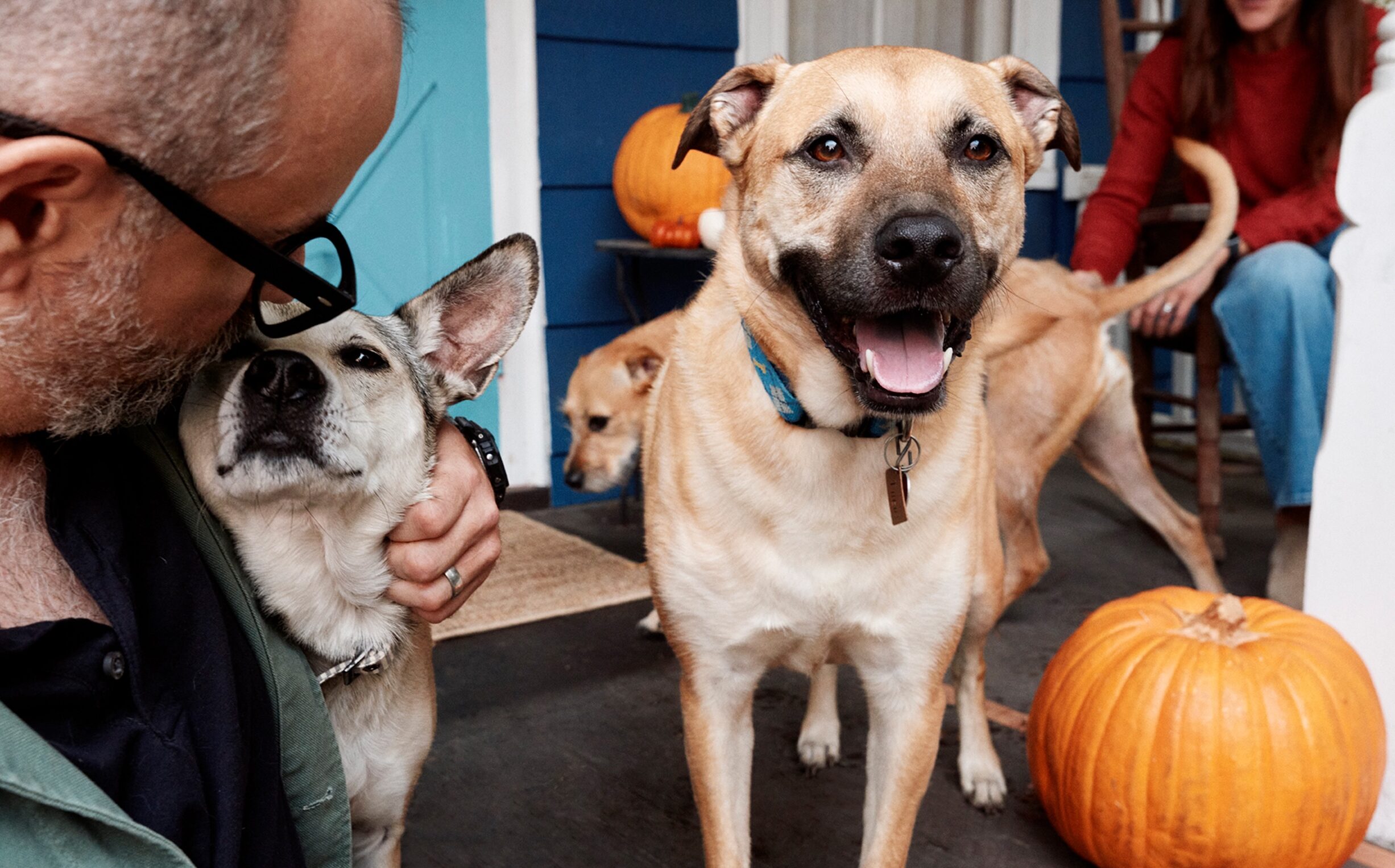Dogs’ weight is among the keys to their health. Research shows that lean dogs can live up to 2.5 years longer than their overweight counterparts. Considering that most American dogs are overweight or obese—as of 2022, the figure was 59%—this means that there’s a big opportunity to extend dogs’ lifespans by helping them get into better shape.
One of the first steps to making sure your dog achieves and maintains a healthy body condition is to know what that looks like and how to get there. To that end, here are some common myths about dogs’ weight, and the facts you need to know as you try to keep your best friend in their best shape.
Myth:
It’s normal for a dog to look a little chunky
Maybe because so many American dogs are overweight, some people think that dogs are “supposed” to look heavy.
In fact, if you can’t see your dog’s waistline or feel their ribs through a layer of fat, they are overweight. This may even look cute—hence the fanfare for “chonky” dogs on social media—but it’s bad for their health.
If your dog has long hair, you’ll want to rely much more on whether you can feel their ribs—because their hair might make it very difficult to see their waistline regardless of their body condition.
For much more detail on how to tell if your dog is at a healthy weight, read our guide to evaluating a dog’s body condition.
Fact:
Healthy body condition is essential to dogs’ overall well-being
As noted above, dogs who look normal or even cute to people may still be carrying extra weight that poses a risk to their health.
Excess weight in dogs is linked to health problems including arthritis, chronic kidney disease, bladder/urinary tract disease, liver disease, diabetes, heart failure, high blood pressure, and cancer.
There is good news, though—overweight dogs may benefit from even slight weight loss; one study showed that lameness associated with osteoarthritis can improve with a weight loss of just 6%. Small changes can matter.

Myth:
A few pounds either way is no big deal for a dog
The other side of this is that a seemingly small unintended weight gain can hurt a dog. Even a weight-conscious person probably wouldn’t be too concerned about gaining or losing five pounds. So it’s easy to think that the same would be true for a dog. But, proportionately, those five pounds are much more significant for most dogs than most people. Five added pounds on a 25-pound dog, for example, represent the same percentage increase as 30 pounds on a 150-pound person.
Fact:
Because dogs usually weigh less than people, a handful of pounds can make a big difference
With the exception of very big dogs, our canine friends tend to weigh much less than we do. As a result, five pounds represents a larger proportion of their total weight—and has a bigger potential impact on their overall health.
When we spoke to Dr. Ernie Ward, founder of the Association for Pet Obesity Prevention (APOP), he explained it this way: “We think, ‘a few [extra pounds on] my Lab; what could the consequence of that be?’ But the consequences are that Lab’s hips are deteriorating, it’s causing damage to the kidneys, [and] it’s probably causing high blood pressure—which is causing a constellation of problems, and it’s increasing cancer risk.”
Myth:
You should let your dog judge when and how much to eat
Because you’re presumably in charge of your own eating schedule, you might think it’s only fair to afford the same privilege to your dog. But dogs aren’t good at responsibly managing their own food intake, and trusting them to do so can lead to a number of problems—including unwanted weight gain. That’s why it’s a very bad idea to free-feed your dog.
Fact:
Dogs should eat specific portions on a schedule
When you feed your dog a precise amount at the same time each day, it’s much easier to keep them in a healthy body condition—and track any changes in their eating habits. There’s more than one way to do this—and a pre-portioned plan from The Farmer’s Dog can make it easier to feed your dog exactly the right amount every day.
Myth:
If a dog exercises enough, they can eat as much as they want
Exercise is vital for dogs—and your best friend needs to get an appropriate amount of physical and mental activity every day. But, as important as exercise is, it’s not everything. You may think that, as long as your dog is active, there’s not much reason to monitor their caloric intake. But, in fact, doing so remains crucial.
Fact:
All dogs need exercise, but calorie intake is the most important factor in body condition
No amount of exercise is going to make up for an excessive calorie intake. Ultimately, you will have to feed your dog an appropriate amount. When we spoke to Dr. Ward, he estimated that the math for dogs’ weight loss was something like 60–70% diet and 30–40% exercise. Those numbers still leave a crucial role for exercise—which also has considerable mental benefits for your dog. Just know that it can’t do it all.
Myth:
There’s no need to keep track of treats
Treats are indispensable as a way to cement your bond with a dog and train them, so it’s tempting to behave as if they “don’t count” and feed as many as you feel like. Unfortunately, doing this can lead to unwanted weight gain.
Fact:
Treats should make up no more than 10% of any dog’s caloric intake
Treats are food, but they’re not complete and balanced—so feeding too many of them can harm a dog in more than one way. First, doing so can cause weight gain.
Another hazard can arise if you start to replace food with treats. If you read a treat bag closely, you’ll see that it’s labeled for intermittent feeding only. This is because treats are not designed to meet all of dogs’ nutritional needs, and feeding them in place of an appropriate everyday diet can lead to dangerous nutrient imbalances.
If you get Snap Sticks from The Farmer’s Dog as part of your dog’s fresh-food plan, we’ll tell you how many treats they can have and stay within that 10% limit. But no matter what extras you’re feeding, work with your vet to make sure you stick to the right amount. If you end up needing more treats, one thing you can do is set aside some of your dog’s complete and balanced food for training purposes.

Myth:
There’s no such thing as “too skinny” for a dog
Having heard the dangers of excess weight for a dog, you might think the simplest thing is just to err on the side of feeding them less. But this is not a wise strategy; dogs, like people, need proper nutrition, and feeding them too little is dangerous.
Fact:
This is not a matter of skinnier being better. It’s bad for a dog to be underweight, too.
While it’s more common for a pet dog to be overweight than underweight, that doesn’t mean the latter is impossible—and dogs who are too skinny face health risks of their own. Nutrient deficiencies can cause serious health problems or even be fatal, so it’s vital that you feed a dog the proper portions of complete and balanced food. One of the many great things about The Farmer’s Dog is that our pre-portioned fresh-food plans make this simple.




